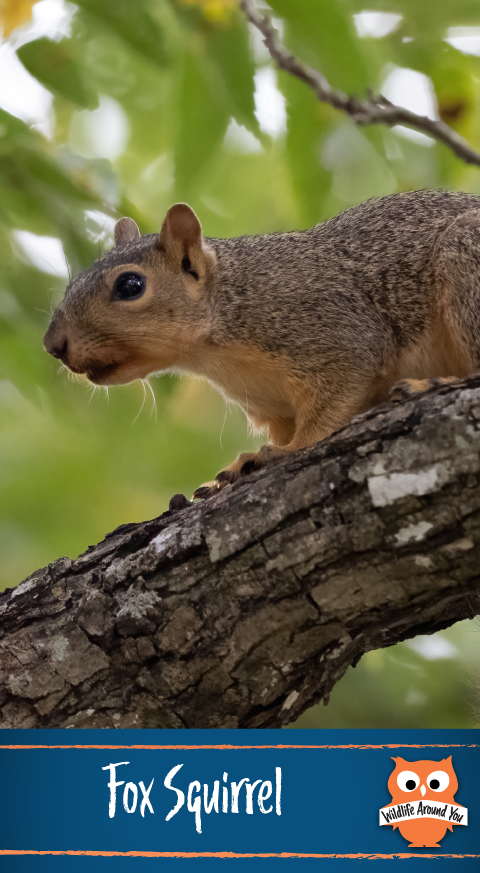Identification
Largest species of tree squirrel native to North America. The total body length is 17-27 in. About the size of a sub sandwich. The tail is 7-13 in. and they weigh 1-2 lbs. Have sharp claws to help with climbing. Are brown-grey or brown-orange. They have excellent vision, hearing, and smell.
Habitat
Most of the eastern U.S. and southern Canada except parts of New England. They are also found along the west coast. In open understory forest patches and in urban neighborhoods with trees.
Nesting
Leaf nests and tree dens. Leaf nests are built in forks of tree limbs about 30 ft above ground. Tree dens are from natural cavities. Dens are usually 6 in wide and 15 in deep. Tree cavities are usually used for winters, and dreys or leaf nests are used in the summer.
Mating
Mid-December to mid-January and again in June. Gestation occurs over a period of 44-45 days.
Offspring
Usually two litters a year averaging 3 young
Eyes open at 4-5 weeks, ears open at 6 weeks.
Weaned between 12 and 14 weeks
Predators
Bobcats, foxes, birds of prey, and dogs if any of them can catch them. In some areas, they’re game animals. Young are vulnerable to raccoons, opossums, snakes, etc.
Diet
Nuts, tree buds, insects, tubers, bulbs, roots, bird eggs, seeds of pines and spring-fruiting trees, and fungi. Agricultural crops such as corn, soybeans, oats, wheat, and fruit are also eaten.
Fun Fact
They are impressive jumpers, easily spanning fifteen feet in horizontal leaps and free-falling twenty feet or more to a soft landing on a limb or trunk. They almost always land on their feet like cats.

